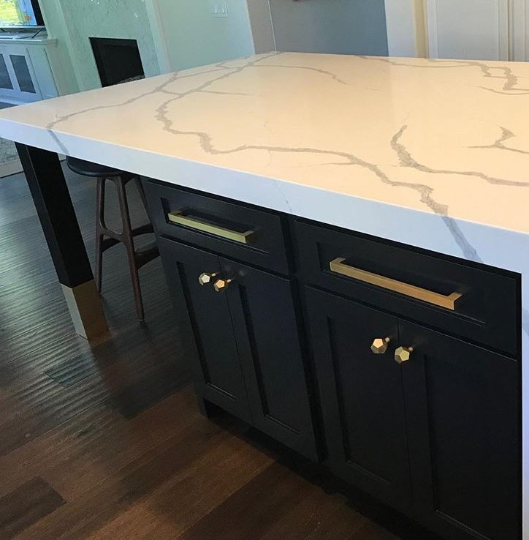A Guide to Selecting the Perfect Legs For Kitchen Island for Your Home
Choosing the suitable legs for your cooking area island is a nuanced choice that affects both the performance and aesthetic charm of this central space. As you consider these elements, it becomes obvious that the best legs can transform not only the look of your kitchen but also its use for years to come.

Recognizing Kitchen Area Island Legs
When selecting legs for a kitchen area island, it's necessary to recognize their practical and visual roles in the total design. The legs work as an essential support group, ensuring security and durability for the island, which commonly functions as an office, eating area, or gathering area. Therefore, the option of product and construction method have to be robust sufficient to hold up against daily use and possible wear.
In enhancement to their architectural responsibilities, legs contribute substantially to the island's aesthetic allure. They can enhance the kitchen's style, whether through typical, modern, or diverse designs. The height and proportion of the legs are also vital factors to consider; they must integrate with the island's countertop height while ensuring comfortable seating for those using the space.
Moreover, the leg design can influence the overall circulation of the cooking area. Open, ventilated leg designs can produce a sense of lightness, while solid, substantial legs may share an extra based and steady aesthetic - Legs For Kitchen Island. Understanding these functional and aesthetic elements will guide property owners in making informed selections that enhance their kitchen area's design and enhance its usability
Popular Styles and Products
The choice of legs for a cooking area island incorporates a range of prominent styles and products, each offering special qualities that can enhance both capability and visual appeals. Among one of the most popular styles are modern, rustic, and conventional. Contemporary legs frequently include smooth, minimalist layouts that highlight simplicity and clean lines, making them perfect for contemporary kitchen areas. Rustic designs, on the other hand, welcome natural environments and commonly showcase reclaimed timber or troubled finishes, including heat and charm to the space. Typical legs commonly display ornate information and craftsmanship, improving classic cooking area designs.

Elevation and Security Considerations

The legs of the cooking area island ought to give sufficient assistance, guaranteeing that the framework can endure day-to-day use without tottering or changing. Material choice plays a substantial role in security; steel legs, for instance, often tend to provide better strength compared to recommended you read timber.
Matching Your Cooking Area Aesthetic
Choosing the appropriate legs for your kitchen island goes past capability; it also plays a considerable duty in the overall aesthetic of the area. When picking legs, consider the design style of your kitchen area. For a modern appearance, streamlined metal or minimalist styles can develop a tidy, modern vibe. On the other hand, rustic or typical kitchens typically profit from wood legs with detailed detailing or a distressed finish, enhancing warmth and character.
Color is another crucial element. Legs that match or comparison with your island's surface and bordering kitchen cabinetry can develop aesthetic consistency or striking prime focus. Coupling dark timber legs with a light marble kitchen counter can add depth and interest. In addition, take into consideration the coating of the legs; matte, glossy, or textured finishes can significantly influence the general feel of the kitchen.
Installment and Upkeep Tips
Setting up kitchen area island legs needs mindful interest to information to make sure both security and aesthetic allure. Begin by picking a suitable location for your island, ensuring it is degree and has sufficient space for activity. If you are attaching the legs to a wall or making use of brackets for included assistance, utilize a stud finder to locate wall surface studs. Mark the positioning of the legs accurately before drilling.
When securing the legs, utilize premium screws and, if required, wood glue for extra toughness. For metal legs, ensure that you are utilizing ideal anchors and tools to prevent damages to your flooring. It is a good idea to inspect for levelness after setup, making modifications as required to avoid tottering.
Clean the legs with a suitable cleaner, avoiding rough products that may scratch the surface area. By complying with these setup and maintenance suggestions, you can guarantee that your kitchen area island legs stay both aesthetically enticing and practical.
Final Thought
In verdict, selecting the ideal legs for a kitchen area island necessitates cautious consideration of height, security, and aesthetic compatibility. Inevitably, thoughtful leg choice plays a crucial function in elevating both the functionality and design of the kitchen area room.
When choosing legs for a cooking area island, it's vital to recognize their practical and visual functions in the total style. home Open, ventilated leg designs can create a feeling of agility, while solid, considerable legs might convey a much more based and stable aesthetic. The legs of the cooking area island should supply adequate support, ensuring that the structure can stand up to daily use without wobbling or changing.Installing kitchen area island legs needs mindful attention to detail to guarantee both stability and aesthetic charm.In verdict, selecting the suitable legs for a kitchen area island requires mindful factor to consider of height, stability, and aesthetic compatibility.
Comments on “Discover Affordable and Chic Solutions in Legs For Kitchen Island Updates”